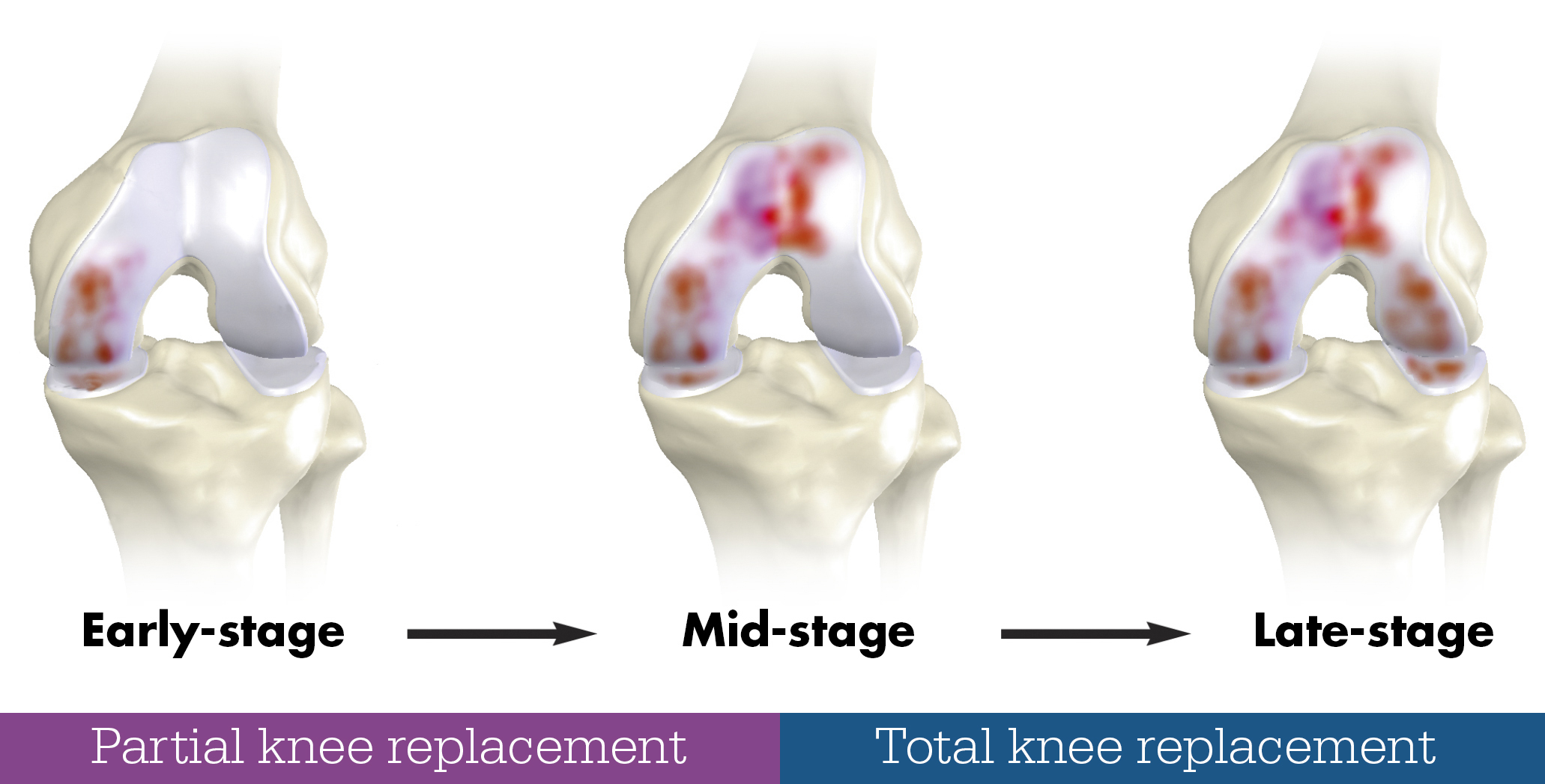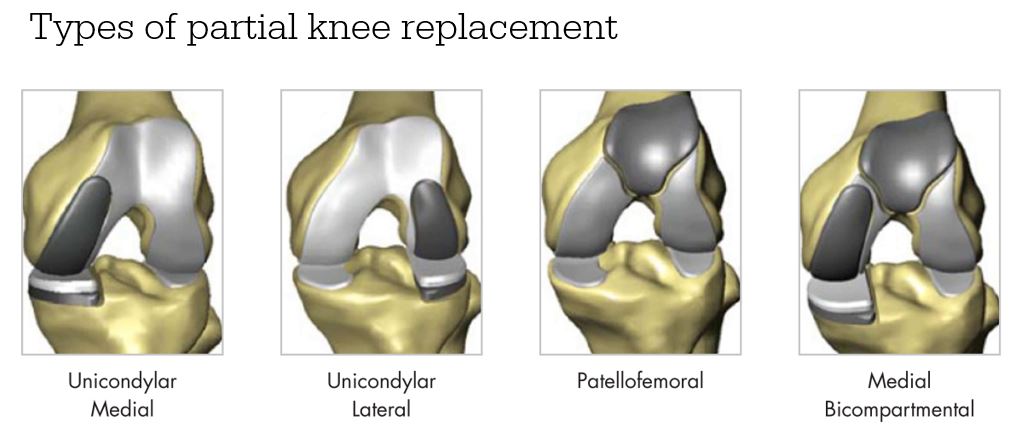Learn About Knee Replacement
-
Total knee replacement
Watch this short video to see how a knee replacement surgery is performed.
Go to Preparing for surgery
-
How does knee replacement surgery work?
When an orthopaedic surgeon performs a total knee replacement, the goal is to give you positive long-term results by:
- Providing pain relief
- Restoring mobility and function, such as walking and sitting
- Improving stability
- Correcting any deformity
Knee replacement is a surgical procedure where a diseased or damaged joint is replaced with an artificial joint. It involves removing some small sections of bone where your femur (thigh bone), tibia (shin bone) and patella (kneecap) come together and replacing them with a combination of surgical-grade metal alloys and highly wear-resistant plastic. The replacement joint is designed to move just like a healthy human joint, and will help with pain and restore the bending movement of the knee

-
Partial knee replacement
The most common surgical knee intervention performed for osteoarthritis (OA) is a total knee replacement. During this procedure, the natural joint is removed and replaced with an artificial implant. This treatment option is usually offered to patients with advanced osteoarthritis of the knee. Total knee replacement may not always be optimal for patients with early to mid-stage OA in just one or two of the patellofemoral (top), medial (inner) or lateral (outer) compartments of the knee.

If you are suffering with partial OA of the knee, your surgeon may recommend a partial knee replacement.

For more information on this option please see the Robotic Partial Knee page.
